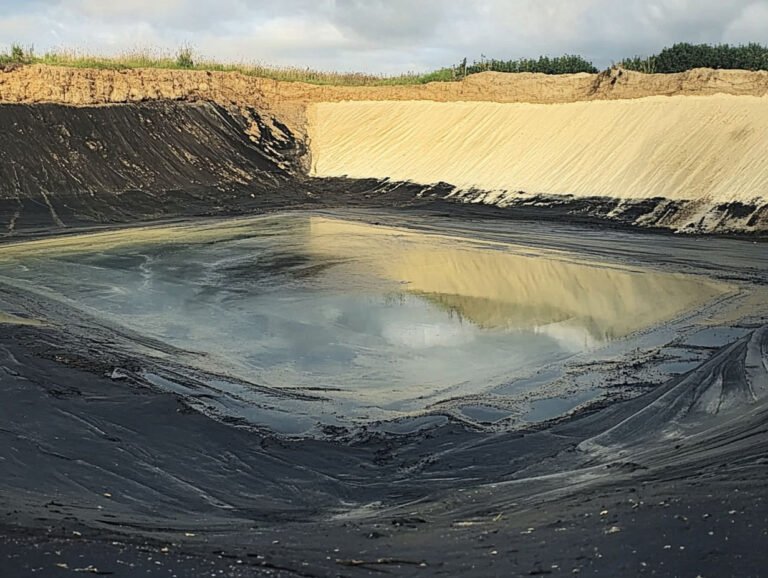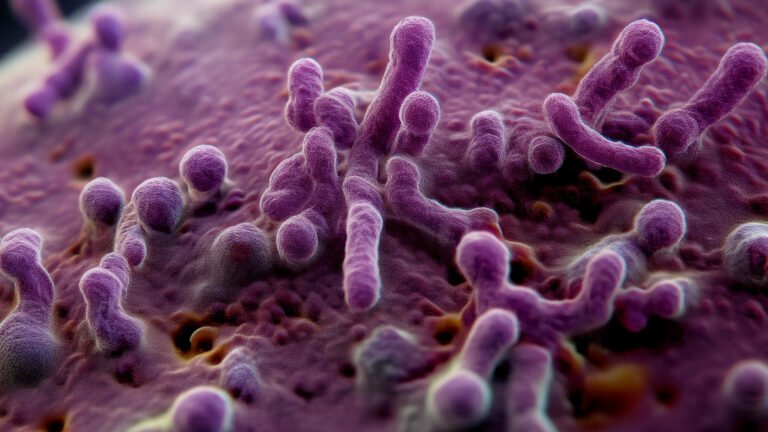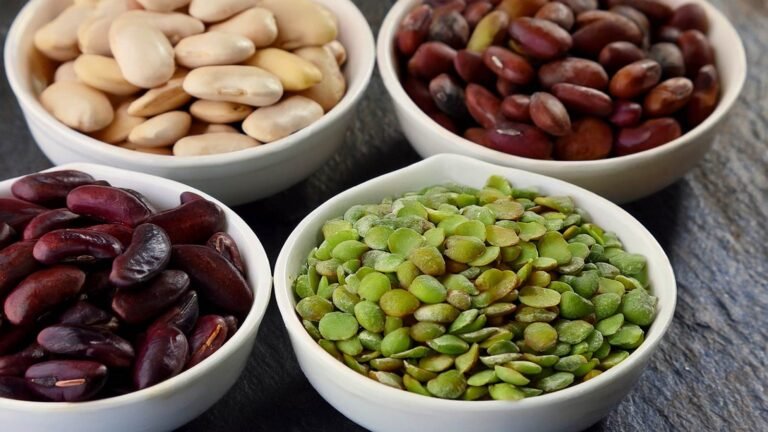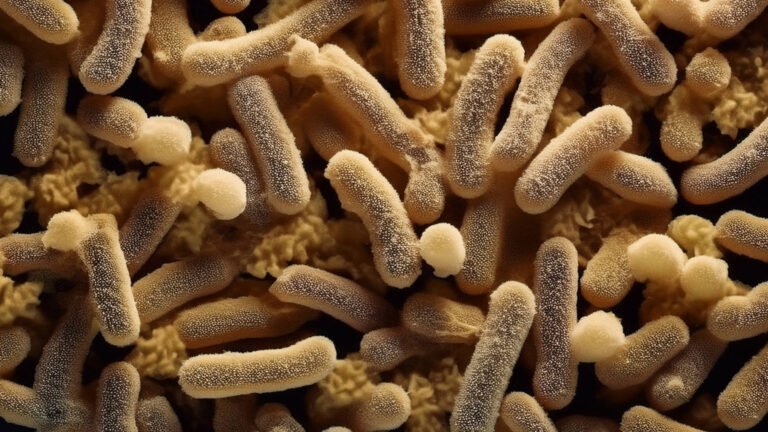What if every bite of food didn’t just fill you up but actually made you healthier – boosting your immune system, keeping diseases away, and giving your body everything it needs to thrive? Sounds amazing, right? That’s where soil health comes in…
Now, imagine the opposite: food that looks fresh but is missing the good stuff. Fewer vitamins, fewer minerals, and less of the nutrients your body craves. Unfortunately, this is already happening, and it’s not just about what’s on your plate – it all starts with the soil it grows in.
Soil isn’t just dirt – it’s alive! A healthy soil is packed with tiny microbes that help plants absorb nutrients, fight off disease, and grow into the kind of powerhouse food your body needs. But when soil gets stripped of its life, so does our food – and that affects everything, including your gut, immunity, and overall health.
Bottom line: If we want healthier bodies, we need to start with healthier soil. Let’s dig into why it matters!
IMAGINE THIS
What if I told you that soil could make you healthier, happier, and even smarter?
From boosting your immune system to fighting depression, soil is the secret superpower beneath our feet – and we’re destroying it.
Here’s why soil health = your health.
I was inspired to write this article after attending an event at Lower Blakemere Farm, organized by Herefordshire Food Alliance and Herefordshire Rural Hub where we watched Six Inches of Soil. This was followed by a fascinating discussion between farmers, experts and members of the public.
You have to watch this movie, and another movie called KISS THE GROUND!
Soil isn’t just dirt – it’s alive! It’s full of tiny, hardworking microbes that help plants absorb nutrients, fight off disease, and grow into the powerhouse foods our bodies need. When soil is rich and healthy, it passes all that goodness on to the crops – and when we eat those crops, we get the benefits too!
Here’s the mind-blowing part: The bacteria in our gut and the microbes in soil are closely connected. The healthier the soil, the more nutrients and beneficial bacteria we get from our food, which helps our digestion, boosts our immune system, and even affects our mood and brain function.
So next time you think about gut health, don’t just look at what’s on your plate – think about where it came from!

Why Does This Matter?
Farming has changed a LOT in the last 100 years – but not always for the better. To grow bigger, faster, and cheaper crops, we’ve loaded our fields with chemical fertilisers, pesticides, and giant fields of single crops (a.k.a. monoculture farming).
The problem? These methods have stripped the soil of its natural goodness, killing off the tiny microbes that help plants absorb nutrients. Less healthy soil = less nutritious food.
Food today isn’t as nutritious as it used to be. The same fruits and veggies our grandparents ate had way more vitamins and minerals than what we eat today. That means even if you’re loading up on healthy foods, you might not be getting the full benefits.
The result? More health problems. We’re seeing more nutrient deficiencies, digestive issues, and even long-term diseases like diabetes, heart disease, and cancer. All because our food has lost its natural power – starting from the ground up.
If we want healthier bodies, we need to fix our soil first.
SIX KEY FACTS
1. Soil = Nature’s Multivitamin – The healthier the soil, the more nutrients your food contains. But modern farming is stripping the soil, making your veggies less nutritious than they were decades ago.
2. Soil is Your Water Filter – Good soil naturally cleans water, keeping harmful toxins out of what you drink. Damaged soil? That means more pollution in your cup.
3. The Ultimate Carbon Sponge – Soil holds more carbon than the atmosphere and all plants combined! Healthy soil helps fight climate change, but degraded soil releases carbon, making things worse.
4. Soil = Medicine Cabinet – About 40% of prescription drugs come from soil microbes. Without healthy soil, we’d have fewer antibiotics and life-saving treatments.
5. Your Gut LOVES Soil – The microbes in soil feed the good bacteria in your gut, helping with digestion, immunity, and even reducing disease risks.
6. Soil Can Make You Happy – Playing in healthy soil literally boosts serotonin, the “happiness chemical.” No wonder gardening is such a great stress reliever!
What This Article Will Cover
Ever wondered why food doesn’t taste as good as it used to? Or why so many people are dealing with gut issues, low energy, and nutrient deficiencies – even when they eat “healthy” foods? The answer starts beneath our feet – in the soil.
In this article, we’re breaking down:
- What makes soil healthy (and why it’s the secret ingredient for nutritious food).
- How soil microbes and gut microbes are BFFs – and why you need both to stay healthy.
- Why poor soil = poor nutrition = poor health (think malnutrition, gut problems, and even chronic diseases).
- The farming methods that can bring soil back to life – and why that’s good news for your body.
- Easy things YOU can do to help fix our food system and protect the planet.
If you care about what’s on your plate, your health, and the future of food, this is a topic you NEED to know about. Whether you’re a foodie, gardener, farmer, or just someone who wants to feel better, understanding soil health is the key to a healthier you – and a healthier world.
Let’s dig in. Literally!
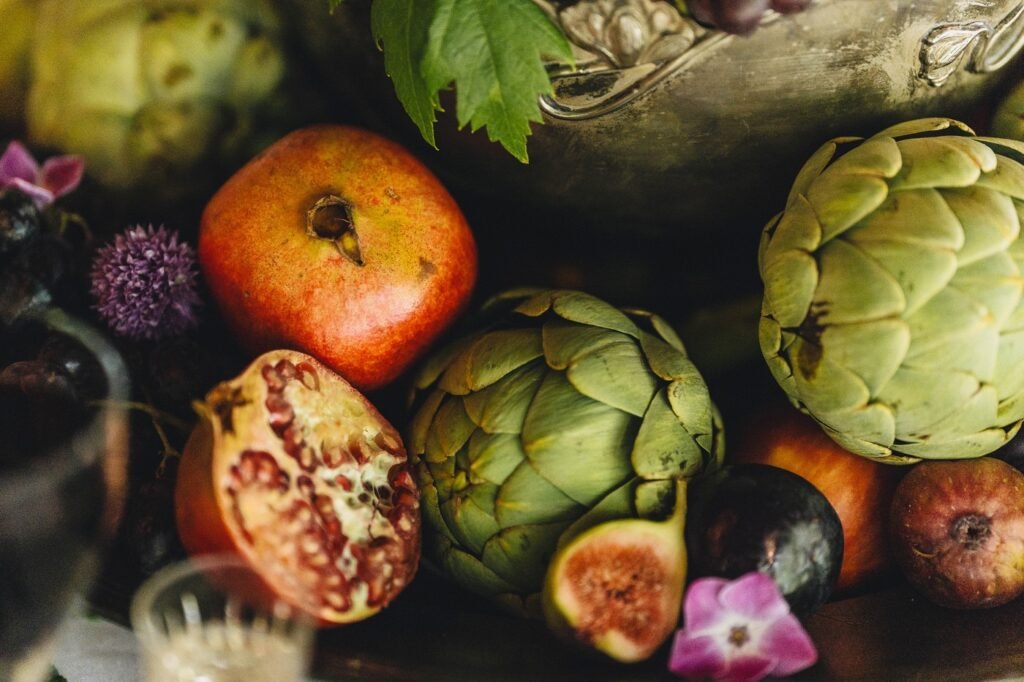
Understanding Soil Health: The Foundation of Nutrient-Rich Crops
What is Soil Health?
Soil is more than just the ground beneath our feet – it’s a living, breathing ecosystem that plays a vital role in sustaining life on Earth. Healthy soil is teeming with microorganisms, organic matter, and essential nutrients that support plant growth and, ultimately, influence the food we eat.
According to soil scientists, healthy soil has three key components:
- Biological health – A rich diversity of microbes, fungi, and beneficial bacteria that help plants absorb nutrients.
- Chemical health – The presence of essential nutrients like nitrogen, phosphorus, and potassium in the right balance.
- Physical structure – Proper aeration, moisture retention, and a stable structure that prevents erosion.
When these elements are in harmony, crops grow stronger, contain more nutrients, and contribute to better human health. However, when soil health is compromised, food quality declines, and so does our well-being.
The Role of Microorganisms in Soil
One of the most overlooked yet crucial aspects of soil health is the presence of microbial life. In a single teaspoon of healthy soil, there are millions of bacteria, fungi, and other microorganisms working together to:
- Break down organic matter – Converting dead plants and compost into vital nutrients for new growth.
- Boost plant immunity – Protecting crops from harmful pathogens and diseases naturally.
- Improve nutrient absorption – Helping plants access minerals like magnesium, calcium, and iron more efficiently.
- Enhance soil structure – Preventing erosion, retaining water, and improving soil aeration.
Why does this matter for human health? Because the same microbial balance that keeps soil fertile and productive also plays a role in our gut microbiome – the diverse community of bacteria that aids digestion, supports immune function, and even influences mental health.

How Modern Agriculture is Depleting Soil Health
Unfortunately, modern farming practices have taken a toll on soil ecosystems. Over the last century, large-scale agriculture has prioritised yield over soil vitality, leading to:
- Overuse of chemical fertilisers – Disrupting the natural balance of nutrients and killing beneficial microbes.
- Pesticides and herbicides – Destroying soil biodiversity and reducing its ability to support healthy crops.
- Monocropping (growing the same crop repeatedly) – Depleting specific nutrients and making soil less fertile over time.
- Intensive tilling – Breaking up soil structure, leading to erosion and loss of organic matter.
These destructive practices have left soils across the world depleted, leading to food with lower vitamin and mineral content than in the past. Research shows that fruits and vegetables grown today contain significantly fewer nutrients than those grown a few decades ago. For example, a study found that the iron content in spinach has dropped by nearly 40% since the 1950s.
This means that even if we eat the same amount of food, we may not be getting the same level of essential nutrients, contributing to widespread deficiencies in key vitamins like B12, iron, and magnesium.
What Can Be Done to Restore Soil Health?
The good news is that we can reverse soil degradation through regenerative and sustainable farming practices. Methods like:
- Crop rotation – Planting different crops in cycles to naturally replenish soil nutrients.
- Cover cropping – Growing plants that improve soil fertility and prevent erosion.
- Composting and organic matter application – Enhancing soil biodiversity and microbial life.
- Reducing tillage – Keeping soil structure intact and preserving its organic content.
- Integrating livestock – Using natural grazing methods to fertilise soil and improve its structure.
By adopting these methods, farmers can rebuild soil health, restore microbial balance, and grow crops that are more nutritious and beneficial for human consumption.
The Key Takeaway
Healthy soil is not just about farming – it’s about our health. The microbial richness of soil affects the quality of the food we eat, our gut microbiome, and ultimately, our overall well-being. When we neglect soil health, we risk diminishing the nutrients in our diet and increasing the likelihood of chronic diseases.
Understanding the role of soil in nutrition is the first step toward making more informed food choices and supporting sustainable agricultural practices.
In the next section, we’ll explore how soil health directly impacts crop nutrition and how these changes influence human gut health.

The Link Between Soil Health and Crop Quality
How Healthy Soil Produces Nutrient-Dense Crops
The phrase “you are what you eat” takes on a whole new meaning when you consider where your food comes from. Just as our bodies need a balanced diet to thrive, plants also require a nutrient-rich environment to grow strong, resilient, and packed with essential vitamins and minerals. That environment starts with healthy soil.
In nutrient-rich, biodiverse soil, crops absorb a wide range of minerals, antioxidants, and beneficial compounds, which ultimately end up in the food we eat. Studies show that plants grown in organic, microbially rich soils have higher levels of key nutrients like vitamin C, magnesium, and omega-3 fatty acids than those grown in depleted soils reliant on synthetic fertilisers.
Nutrient Uptake: The Soil-Plant Connection
Healthy soil acts like a natural multivitamin for plants. It contains essential nutrients in forms that plants can easily absorb, including:
- Nitrogen (N) – Essential for plant growth and chlorophyll production.
- Phosphorus (P) – Supports root development and energy transfer.
- Potassium (K) – Strengthens plant immunity and regulates water balance.
- Magnesium (Mg) – Helps plants produce chlorophyll and enzymes.
- Calcium (Ca) – Strengthens plant cell walls, leading to more robust crops.
However, when soil is degraded due to industrial farming, chemical use, and over-cultivation, these nutrients become scarce or unavailable, leading to:
- Lower nutrient density in crops – Fruits and vegetables contain fewer vitamins and minerals than before.
- Weaker plants – More susceptible to diseases and pests, requiring more chemical interventions.
- Poor soil structure – Leading to erosion, water loss, and further degradation.
Simply put, if the soil is unhealthy, the food we eat becomes less nutritious – impacting our health and well-being over time.

The Loss of Nutrients in Modern Crops
Decades of industrial agriculture have taken a toll on the nutritional quality of our food. Research has found that:
- Vegetables today have up to 40% fewer minerals, proteins, and vitamins than those grown 50 years ago.
- Magnesium levels in wheat have dropped by 19% since the 1960s.
- Calcium, iron, and phosphorus levels in fresh produce have significantly declined over time.
- The omega-3 fatty acid content in grains has plummeted due to synthetic fertiliser use.
This means that even if we’re eating more fruits and vegetables, we may not be getting the same level of nutrition our grandparents did from the same foods.
Did You Know? A carrot grown today contains less than half the vitamin A content of a carrot grown in the 1950s due to soil depletion.
How Soil Health Influences Flavour and Antioxidants
Beyond nutrition, soil health directly impacts the flavour and medicinal properties of food. Studies have found that:
- Nutrient-rich soils produce more flavourful fruits and vegetables because of their higher phytonutrient content.
- Plants grown in biodiverse soils have more antioxidants (like polyphenols and flavonoids) that help combat inflammation and disease in humans.
- Organic and regenerative farming methods increase the medicinal properties of herbs, spices, and crops by enhancing their natural defence compounds.
When plants struggle to absorb nutrients from poor soil, they produce fewer antioxidants, leading to bland-tasting, nutritionally empty produce. This is why many people say organic fruits and vegetables taste better – they’re not just free from chemicals, but they also contain higher levels of flavour-enhancing nutrients.
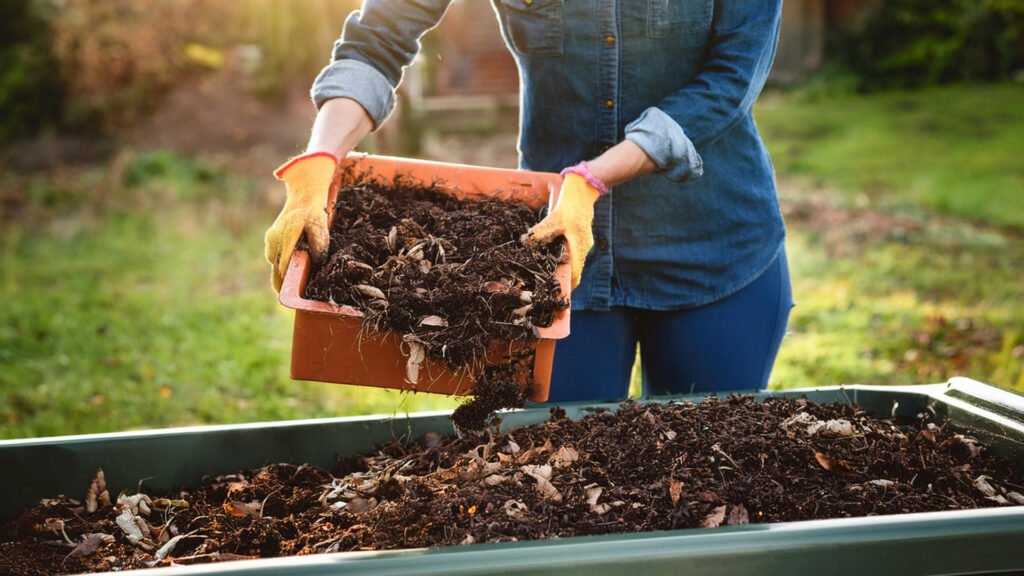
The Farming Practices That Make a Difference
The good news? Farmers can restore soil health and grow more nutritious food by shifting to regenerative farming practices, including:
- Composting – Enriching soil with organic matter to boost microbial diversity.
- Crop rotation – Preventing nutrient depletion by growing different plants each season.
- Cover cropping – Protecting soil from erosion and enhancing its structure.
- No-till farming – Preserving soil microbes by reducing disturbance.
- Livestock integration – Naturally fertilising soil with manure instead of synthetic chemicals.
These methods not only produce healthier food but also help reverse climate change by capturing carbon in the soil.
What This Means for You
If you want to ensure the food on your plate is as nutritious as possible, consider:
- Buying organic or regeneratively farmed produce to support nutrient-rich soil.
- Choosing locally grown foods that haven’t lost nutrients during transport.
- Growing your own food using compost and natural fertilisers.
- Advocating for policies that support soil regeneration and sustainable farming.
In the next section, we’ll explore the fascinating connection between soil microbes and your gut microbiome – and why healthy soil means a healthier you!
Soil Health and the Human Gut Microbiome: A Surprising Connection
What is the Human Gut Microbiome?
Inside your body, particularly in your digestive system, exists a vast community of trillions of bacteria, fungi, and other microorganisms – collectively known as the gut microbiome. These microbes are essential for:
- Digesting food and extracting nutrients
- Regulating the immune system
- Producing essential vitamins like B12 and K
- Protecting against harmful pathogens
- Influencing mental health and mood
A well-balanced gut microbiome is key to overall well-being, but modern diets and environmental factors are disrupting this delicate ecosystem. One of the biggest influences on gut health? The quality of the food we eat – starting with the soil it’s grown in. Image below illustrates the effects of plant microbiota on our gut microbiome – see the original EMBO report

The Soil-Gut Microbiome Connection
Soil and the human gut share remarkable similarities in how they function as microbial ecosystems. Both contain diverse bacterial communities that break down organic material, recycle nutrients, and regulate overall health. When soil is healthy and full of beneficial microbes, it transfers its microbial diversity to crops, which then nourish and support our gut microbiome when we eat them.
How Soil Microbes Influence Gut Health
- Microbial Diversity – Eating food from microbially rich soil increases the variety of bacteria in your gut, strengthening your immune system.
- Prebiotics from Soil – Certain fibres and natural compounds from healthy soil act as prebiotics, feeding good bacteria in the gut.
- Enhanced Nutrient Absorption – The microbes in soil help plants absorb more bioavailable nutrients, which, in turn, benefit human digestion and metabolism.
- Natural Probiotics – Traditional, soil-rich diets naturally expose us to beneficial bacteria, reinforcing gut resilience.
How Modern Farming Disrupts Our Gut Health
The widespread use of synthetic fertilisers, pesticides, and monocropping has not only depleted soil health but has also negatively impacted human gut microbiota.
- Reduced Microbial Exposure – Less biodiversity in soil means fewer beneficial microbes are transferred to our food.
- Nutrient-Depleted Crops – Less nutritious food results in gut bacteria imbalances and increased susceptibility to disease.
- Pesticide Residues – Common agricultural chemicals harm not only soil microbes but also beneficial bacteria in the human gut.
- Ultra-Processed Diets – Mass food production prioritises quantity over quality, further weakening gut health.
Many autoimmune diseases, digestive disorders, and inflammatory conditions have been linked to imbalances in the gut microbiome – and the declining microbial diversity in food may be a key contributor.
Soil Health, Gut Health, and Chronic Disease
Scientists are now uncovering direct links between soil degradation and human health problems, including:
- Obesity and Diabetes – Nutrient-poor foods disrupt blood sugar balance, gut bacteria diversity, and metabolism.
- Irritable Bowel Syndrome (IBS) and Digestive Issues – Reduced microbial intake from soil leads to weaker gut flora and increased digestive disorders.
- Autoimmune Disorders – Lack of microbial diversity in the gut is associated with conditions like Crohn’s disease and rheumatoid arthritis.
- Mental Health Decline – Soil microbes like Mycobacterium vaccae have been found to stimulate serotonin production, improving mood and reducing anxiety.
Did You Know? Research suggests that playing in soil or gardening may help boost mental well-being by exposing us to beneficial microbes that positively influence brain chemistry.

Restoring Soil and Gut Health: What Can You Do?
By making conscious food and lifestyle choices, you can help restore both soil biodiversity and your own gut health:
- Choose Regeneratively Grown Foods – Support farmers who prioritise soil health through organic and regenerative methods.
- Eat a Diverse Diet – The more variety in your plant-based foods, the more diverse your gut microbiome.
- Avoid Ultra-Processed Foods – These lack natural microbes and prebiotics essential for gut health.
- Grow Your Own Food – Home gardening with compost and organic methods can enrich soil microbiota and expose you to beneficial microbes.
- Get Outside and Touch the Soil – Gardening, hiking, and even walking barefoot on healthy soil can introduce beneficial bacteria to your body.
The Key Takeaway
Soil health and gut health are deeply interconnected. The bacteria in soil shape the nutritional quality of food, which in turn affects the diversity and strength of our gut microbiome. By supporting sustainable farming and making mindful dietary choices, we not only improve our own health but also contribute to a healthier planet.
In the next section, we’ll dive into the alarming consequences of soil degradation on both the environment and public health – and why urgent action is needed.
How Soil Health and Human Health Are Connected – according to the UN
Most people don’t think about soil beyond their garden or local park, but healthy soil is essential for keeping us healthy too. It affects everything from the nutrients in our food to the quality of the air we breathe. When soil is thriving, so are we – but when it’s damaged, it can lead to serious health problems.

Here are six surprising ways soil and human health are linked:
1. Soil Grows More Nutritious Food
The healthier the soil, the more vitamins and minerals end up in our fruits, vegetables, and grains. Good soil is full of microbes and organic matter that help plants absorb the nutrients they need. But when soil gets overused and depleted, food becomes less nutritious – which means we don’t get as many essential nutrients from our meals as we should.
2. Healthy Soil Helps Prevent Droughts
Good soil holds water like a sponge, meaning plants get the moisture they need even when rain is scarce. In fact, one cubic metre of healthy soil can hold over 250 litres of water! This helps reduce the need for extra irrigation and makes crops more resilient during dry seasons.
3. Soil Cleans the Air We Breathe
Soil plays a huge role in storing carbon from the atmosphere, which helps keep our air cleaner and reduces climate change effects. Globally, soil holds over 1,500 billion tonnes of carbon – but when we damage soil through bad farming practices, it releases carbon back into the air, making climate change worse.
4. Medicine Comes from Soil
Believe it or not, some of the most important medicines we use today come from soil bacteria. About 40% of prescription drugs – including antibiotics – were discovered in soil. Without healthy soil, we wouldn’t have many life-saving treatments we rely on.
5. Soil Affects Our Gut Health
The microbes in soil and the good bacteria in our gut are closely connected. When we eat foods grown in microbially rich soil, we’re feeding our gut with the right kinds of bacteria that help with digestion, immunity, and even mood regulation. But modern diets and industrial farming practices have weakened this connection, leading to an increase in gut health issues and chronic diseases.
6. Playing in Dirt Can Boost Mental Health
Soil bacteria don’t just help with digestion – they can also improve our mood and brain function! Studies suggest that exposure to soil microbes may reduce stress and anxiety, which is one reason why activities like gardening can make people feel happier and more relaxed.
Why This Matters
Soil isn’t just dirt – it’s the foundation of life. When we take care of it, we grow better food, breathe cleaner air, and even improve our mental and physical health. But if we continue to degrade our soils, we’re not just harming the environment – we’re harming ourselves too.
The good news? We can all do something about it! Supporting sustainable farming, eating regeneratively grown food, and even spending more time in nature can help rebuild the connection between soil health and human health.

The Consequences of Soil Degradation: A Crisis for Human and Environmental Health
What Happens When Soil Health Declines?
Soil degradation isn’t just a problem for farmers – it’s a global crisis affecting food security, environmental stability, and public health. When soil loses its microbial richness, structure, and nutrients, the effects ripple throughout the entire ecosystem, leading to:
- Nutrient-Deficient Crops – Depleted soil produces food with lower vitamin and mineral content, contributing to widespread nutritional deficiencies.
- Increased Chronic Disease – Poor nutrition leads to higher risks of obesity, diabetes, heart disease, and autoimmune disorders.
- Reduced Crop Yields – Farmers struggle with declining productivity, making food more expensive and less accessible.
- Environmental Damage – Erosion, desertification, and loss of biodiversity accelerate climate change and disrupt ecosystems.
- Contaminated Water Supplies – Chemical runoff from degraded soils pollutes rivers, lakes, and drinking water.
Did You Know? More than 30% of the world’s agricultural land is now classified as “degraded”, meaning it can no longer support healthy crop growth.
Soil Degradation and Its Impact on Human Health
Poor soil quality directly affects the food we eat, making it less nutritious and less beneficial for gut health. Studies show that fruits, vegetables, and grains grown in degraded soils contain significantly fewer essential nutrients than those grown in healthy soils.
Health Risks from Nutrient-Depleted Food
- Iron Deficiency – Linked to anaemia, fatigue, and weakened immune function.
- Magnesium Deficiency – Affects heart health, muscle function, and mental well-being.
- Vitamin B12 and Folate Deficiency – Leads to cognitive decline, mood disorders, and nerve damage.
- Lower Antioxidant Levels – Increases inflammation and risk of chronic diseases like cancer and heart disease.
A shocking fact: A study comparing food from the 1950s to today found that modern vegetables contain 38% less iron, 15% less vitamin C, and 12% less calcium.
With our health directly tied to the food we eat, the decline in soil health is an urgent issue that we can’t afford to ignore.
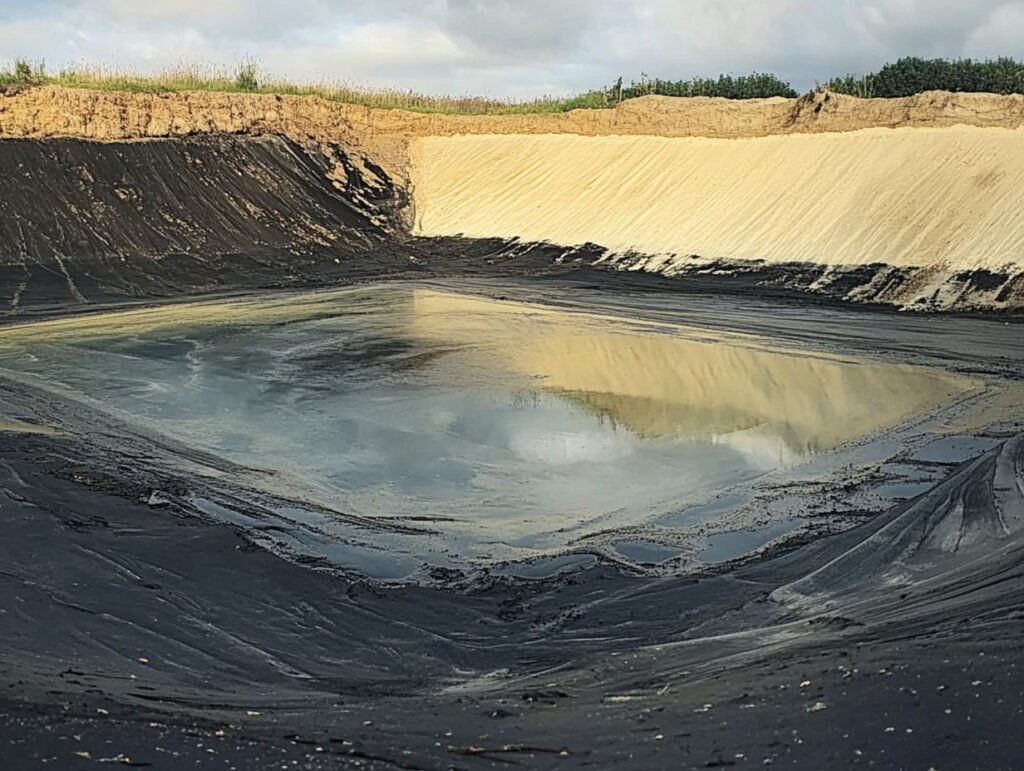
Environmental Consequences of Soil Degradation
The loss of healthy soil doesn’t just affect human health – it also has devastating consequences for the planet.
- Soil Erosion – Degraded soil loses its ability to retain water and nutrients, leading to massive erosion and desertification.
- Climate Change Acceleration – Healthy soil absorbs carbon dioxide, but degraded soil releases stored carbon, contributing to global warming.
- Water Pollution – Chemical-laden runoff from poor soils contaminates rivers, lakes, and groundwater sources.
- Loss of Pollinators and Biodiversity – Soil degradation disrupts natural ecosystems, putting species like bees, butterflies, and beneficial insects at risk.
The Big Picture: If we continue to degrade soil at the current rate, scientists estimate that we have fewer than 60 harvests left before agricultural collapse.
Reversing Soil Degradation: A Global Effort
The good news? We can restore soil health through regenerative and sustainable farming. Governments, farmers, and consumers all have a role to play.
Solutions for Soil Regeneration
- Regenerative Agriculture – Prioritising soil-building techniques like crop rotation, cover cropping, and no-till farming.
- Reduced Chemical Use – Minimising synthetic fertilisers and pesticides to protect soil biodiversity.
- Integrating Livestock – Using natural grazing systems to improve soil structure and fertility.
- Agroforestry – Planting trees and vegetation alongside crops to prevent erosion and enhance biodiversity
- Composting and Organic Matter – Enriching soil with natural nutrients instead of relying on synthetic inputs.
Case Study: Countries like India and the Netherlands have launched national soil health initiatives to restore degraded farmland and increase food security. Similar efforts are growing worldwide.
What Can You Do?
You don’t have to be a farmer to help restore soil health and protect your own well-being. Here’s how you can make a difference:
- Choose Organic and Regeneratively Grown Foods – Support farmers who prioritise soil health.
- Start Composting – Reduce food waste and enrich soil in your own garden.
- Avoid Over-Processed Foods – Processed foods are often made from nutrient-poor crops.
- Advocate for Sustainable Farming Policies – Support policies that protect soil and water resources.
- Educate Others – Share the importance of soil health with family, friends, and your community.
The Key Takeaway
Soil health is a critical but often overlooked factor in human health and environmental sustainability. By restoring soil ecosystems, we can improve the quality of our food, strengthen our gut health, and protect future generations from the devastating effects of soil degradation.
In the next section, we’ll explore the practical steps individuals can take to support a healthier soil-food system and improve personal well-being.

Sustainable Farming Practices for Soil and Human Health
How Can We Restore Soil and Improve Our Health?
The degradation of soil isn’t irreversible. By adopting sustainable and regenerative agricultural practices, we can rebuild soil fertility, increase food nutrition, and improve human gut health. The shift away from chemical-dependent industrial farming to nature-friendly farming is already underway – and it’s making a difference.
In this section, we explore proven farming techniques that improve soil biodiversity, enhance crop nutrition, and contribute to human health.
1. Regenerative Agriculture: The Key to Healthy Soil
Unlike conventional industrial farming, regenerative agriculture focuses on healing the land while improving crop productivity. It is a holistic approach that:
- Restores soil microbial diversity – Encourages the growth of beneficial bacteria and fungi.
- Enhances carbon sequestration – Traps atmospheric carbon in soil, reducing greenhouse gas emissions.
- Improves water retention – Reduces soil erosion and drought vulnerability.
- Increases crop resilience – Produces stronger, healthier plants with higher nutrient content.
Key Regenerative Farming Practices Include:
- No-Till Farming – Avoiding ploughing to maintain soil structure and protect microbial life.
- Cover Cropping – Planting legumes, clover, and grasses between crop cycles to prevent erosion and build soil fertility.
- Crop Rotation & Polyculture – Growing a diverse range of crops to naturally replenish soil nutrients and prevent disease outbreaks.
- Composting & Organic Matter – Adding compost and biochar to soil to boost organic content and microbial health.
- Agroforestry – Integrating trees and shrubs into farming systems to enhance biodiversity and protect soil from erosion.
- Holistic Grazing – Using rotational livestock grazing to naturally fertilise and aerate the soil.
Did You Know? Regenerative farming has been shown to increase soil carbon storage by up to 50%, helping to combat climate change.

2. Organic Farming: Growing Food Without Synthetic Chemicals
Organic farming eliminates the use of synthetic pesticides, fertilisers, and genetically modified organisms (GMOs) that harm soil microbiota and reduce nutrient density in crops.
Studies show that organic produce contains higher levels of antioxidants, essential minerals, and beneficial plant compounds compared to conventionally farmed crops. Additionally, organic farming supports soil biodiversity, improves soil fertility, and reduces pollution in water sources.
Why Organic Farming is Better for Soil and Human Health
- Preserves beneficial microbes – Protects soil and gut microbiomes from chemical exposure.
- Enhances plant immunity – Strengthens natural disease resistance in crops.
- Reduces toxic pesticide residues in food – Lowers the risk of gut microbiome disruption.
- Minimises environmental pollution – Prevents chemical runoff from contaminating rivers and lakes.
3. Permaculture: A Self-Sustaining Farming System
Permaculture is a design-based approach to farming that mimics natural ecosystems. It focuses on long-term sustainability by using:
- Closed-loop nutrient cycling – Recycling organic matter to naturally fertilise soil.
- Mulching and composting – Protecting soil from erosion and maintaining moisture.
- Natural pest control – Encouraging beneficial insects and biodiversity to manage pests without pesticides.
- Food forests – Planting a diverse mix of fruit trees, shrubs, and vegetables to create a resilient agricultural ecosystem.
Case Study: Farmers in Australia have successfully used permaculture to regenerate degraded land and turn arid areas into productive farmland.

4. Soil Health and Human Gut Health: A Shared Responsibility
To support soil health and, in turn, human health, we need collective action from farmers, policymakers, food producers, and consumers. This means:
- Farmers – Adopting regenerative and organic methods to restore soil biodiversity.
- Policymakers – Encouraging soil-friendly agricultural policies and subsidies.
- Food Industry – Reducing reliance on ultra-processed foods and promoting soil-nourishing ingredients.
- Consumers (YOU) – Making informed choices about food sourcing, diet, and sustainability.
What Can You Do?
Even if you’re not a farmer, your choices influence the future of food and soil health. Here’s how you can take action:
- Buy from Local and Regenerative Farms – Support farmers who prioritise soil health.
- Choose Organic Whenever Possible – Reduce exposure to pesticides that harm soil and gut microbes.
- Start a Home Garden – Grow your own food using compost and natural fertilisers.
- Advocate for Sustainable Agriculture – Support policies that fund soil regeneration projects.
- Reduce Food Waste – Compost food scraps to return nutrients to the soil.
The Key Takeaway
Farming practices have a direct impact on the health of our soil, food, and bodies. Regenerative, organic, and permaculture farming are essential solutions to restore soil biodiversity, improve food quality, and protect human gut health.
In the next section, we’ll explore how individuals can take further practical steps to support a healthier soil-food system and enhance personal well-being.

Practical Steps for Individuals: How You Can Support Soil and Gut Health
Why Your Choices Matter
Every meal you eat and every food purchase you make has a ripple effect on the health of soil, crops, and your own body. While governments and farmers play a significant role in regenerating soil health, consumers have the power to drive demand for healthier food systems. By making small, conscious changes in your daily habits, you can help restore soil biodiversity, improve food quality, and support your own gut microbiome.
In this section, we outline simple but powerful ways to align your diet and lifestyle with soil health.
1. Choose Nutrient-Dense, Soil-Friendly Foods
The best way to support soil health is to buy and eat food that is grown in healthy soil. Prioritise:
- Organic and Regeneratively Farmed Produce – Supports soil microbial diversity and reduces chemical exposure.
- Locally Grown Foods – Fresher and richer in nutrients than mass-produced, long-transported crops.
- Seasonal Produce – Often grown with fewer chemical inputs and in more natural conditions.
- Heritage & Heirloom Varieties – Contain more diverse nutrients than modern, mass-produced crops.
Tip: Look for “soil-friendly” certifications such as Organic, Regenerative Organic Certified, or Biodynamic to ensure your food is grown in a way that supports both human and environmental health.
2. Reduce Your Consumption of Ultra-Processed Foods
Highly processed foods – such as sugary snacks, refined grains, and ready-made meals – are often made from crops grown in nutrient-depleted soils using chemical fertilisers. These foods:
- Contain fewer vitamins and minerals than whole, soil-grown foods.
- Disrupt gut microbiota, leading to digestive and immune issues.
- Encourage industrial farming practices that harm soil health.
Instead, focus on whole, minimally processed foods like fresh vegetables, nuts, seeds, legumes, and high-quality animal products from grass-fed or organic sources.

3. Grow Your Own Food and Improve Soil at Home
Even if you don’t have a farm, you can regenerate soil in your own garden or allotment. Gardening not only produces nutrient-rich food but also exposes you to beneficial soil microbes that can strengthen your immune system.
Ways to Improve Soil Health in Your Own Space
- Compost food scraps – Reduces waste while creating natural fertiliser.
- Use cover crops and mulch – Protects soil, retains moisture, and improves microbial diversity.
- Avoid synthetic fertilisers and pesticides – Keep soil ecosystems healthy and balanced.
- Rotate crops each season – Prevents nutrient depletion and mimics nature’s regenerative cycles.
Did You Know? Exposure to soil microbes while gardening has been linked to lower stress levels and improved mood!
4. Support Sustainable Agriculture Through Your Purchases
Every pound you spend on food influences how that food is grown. By supporting brands and farms that prioritise soil health, you help drive change in the food industry.
- Buy from Farmers’ Markets – Get fresh, locally grown, soil-friendly food.
- Look for “Regenerative Organic” Labels – Ensures soil-friendly farming methods were used.
- Support Agroecology & Community Supported Agriculture (CSA) Schemes – Invest in small-scale, sustainable farms.
- Ask Questions at Your Supermarket – Push for better transparency on how food is grown.
5. Get Involved in Soil Conservation and Advocacy
If you want to make a bigger impact, consider advocating for soil restoration efforts in your community. You can:
- Support policies that fund regenerative farming and soil conservation projects.
- Join local or global soil health movements (e.g. Soil Association, Regeneration International).
- Attend farm tours and soil workshops to learn more about sustainable agriculture.
- Educate others by sharing knowledge on soil health, gut health, and nutrition.
Action Step: Start a conversation with your local MP or councillor about policies that promote soil restoration and organic farming initiatives.

Final Thoughts: The Future of Food and Health Starts with the Soil
Soil is where it all begins. It’s the foundation of life, shaping the quality of our food, the strength of our gut, and even the future of our planet. When we take care of our soil, it gives back – with nutrient-packed food, a thriving gut microbiome, and a healthier world for future generations.
The good news? You don’t need to be a farmer to make a difference!
- Choose food grown in healthy soil (organic, regenerative, or locally sourced).
- Cut back on ultra-processed foods that come from nutrient-depleted soil.
- Support farmers and brands that prioritise soil health.
- Speak up for sustainable farming policies that protect our land and water.
- It all starts with the ground beneath our feet – because when we take care of the soil, it takes care of us.
Your Next Steps: Get Involved Today!
- Shop smarter – Buy organic, regenerative, and soil-friendly food.
- Grow your own food – Even a small herb garden supports soil biodiversity.
- Educate yourself & others – Share this information with family and friends.
- Take action – Support policies and brands that prioritise soil health.


